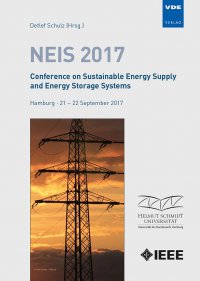Influence of Virtual Impedance on Short Circuit Performance of Virtual Synchronous Machines in the 9-Bus System
Konferenz: NEIS 2017 - Conference on Sustainable Energy Supply and Energy Storage Systems
21.09.2017 - 22.09.2017 in Hamburg, Deutschland
Tagungsband: NEIS 2017
Seiten: 7Sprache: EnglischTyp: PDF
Persönliche VDE-Mitglieder erhalten auf diesen Artikel 10% Rabatt
Autoren:
Welck, Friedrich; Duckwitz, D.; Gloeckler, C. (Fraunhofer Institute for Wind Energy and Energy System Technolgy, Kassel, Germany)
Inhalt:
Due to decreasing shares of synchronous generators in power systems, power system stability has increasingly to be ensured through power electronic generators. Grid forming controls like the virtual synchronous machine (VSM) are a suitable approach for the stable operation of power systems with very high shares of inverters. High short-circuit currents and rotor angle oscillations are an inherent property of VSMs - similar to real synchronous machines (SM). These are driving semiconductor cost to multiples of conventional inverter designs. In this paper the behavior of VSM control during grid faults is analyzed with the use of the IEEE 9-Bus system. With the introduction of the virtual circuit (VC) the current during short-circuit faults is reduced to about 50%, while the active power set-point limitation reduces angle displacements and thus improves transient stability.


